Blogs
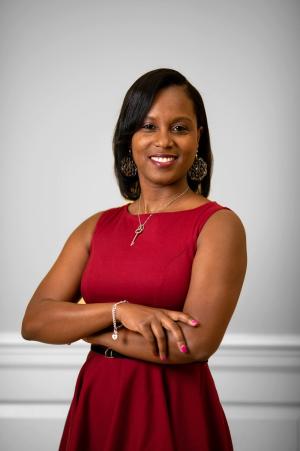
Take a deep breath in … and exhale. This has been a recurring practice in my classrooms lately. Taking a moment to breathe – both physically and pedagogically. What started as an interesting idea to shape my classes in a rhythm of breath, has proven to be a welcomed experience for students throughout the landscape of a semester of communal learning – breathing together. Both the actual practice of slowing down at the start of class, centering, and taking a moment to breathe before or after diving into class content; as well as the movement through learning as a breath – an inhale of information, and an exhale of reflection – cultivate a unique rhythm of engagement, communal connection, and sustained learning. This idea of intentionally infusing breath into the classroom has fascinated me for some time with its creative possibilities. In its development, I have found that this breath-centered pedagogy creates space for one’s humanity and lived-experiences to be present and valued in the learning process. For example, in my most recent class, students expressed feelings of freedom in learning, being seen and heard, and recognizing a community that held space for their theological processing. The classroom became a place of embodied learning that welcomed vulnerability, risk-taking, and difference. At the same time, it also required a willingness to be fully present in the process. Breathing was a primary part of ensuring this presence, with moments to breathe together at the start of class, after working with difficult content, and sometimes at the close of a class session. The breath-centered pedagogy I have developed is informed by time spent in actual breathwork practice led by a certified coach. From the lessons learned working with this coach, my approach to teaching holds three priorities: (1) model the practice of breath in the classroom, (2) make room to breathe, and (3) be open to what breath can create. In modeling the practice of breath and making room to breathe, my classes are shaped in a circular rhythm that includes information intake, processing, and reflection through creative modes of learning. There are breath weeks introduced at weeks five and ten of the semester, which provide a chance to slow down and think deeply in community. These weeks make room for us to breathe in learning and in life. They are points along the way to assess the progress of the class as a collective, while also making room to allow life to show up in the room, which provides insight to the wellness of the students beyond the classroom persona they put on to navigate institutional expectations. Breathing allowed them to let down guards and be freely themselves – even if only for a few hours of the day. The final priority is where I have witnessed the magic – being open to what breath can create. This past semester in my Womanist/Feminist Spirituality and Worship course, breath created community and connection, it empowered creativity and vulnerability, and it cultivated joy. Bodies in space learning together, who were allowed to breath, became a community that developed a connection across dialogue around ritual, sacramental theology, and women’s ways of worship. This community affirmed and celebrated one another, they laughed and cried together, and they developed constructive theologies around liturgical practice born from theological creativity and freedom that many of them were afraid to embrace. This was the power of breath for this community. So, what am I learning from this breath-centered pedagogy? While there is still room for fine-tuning the practice, there is so much potential in breathing together. I am learning that this practice of breathing must be mutual. I must breathe with the class, and not just facilitate the breath process. In breathing together, in shaping a class in a rhythm of breath, there must be room for flexibility because just like our natural rhythms of breath, depending on the activity or location, our rhythms of breathing change, and we must adjust in the moments to catch our breath, to find our breath, to pace our breath. So was the case in our learning. Finally, while not so much of a lesson but rather an observation, breath led to laughter, laughter led to joy, joy led to transformation (even in the smallest ways), and shared transformation led to deep learning. This is the impact of breath in the classroom. May we all be so inclined to breathe together. So again, take a deep breath in … and exhale.
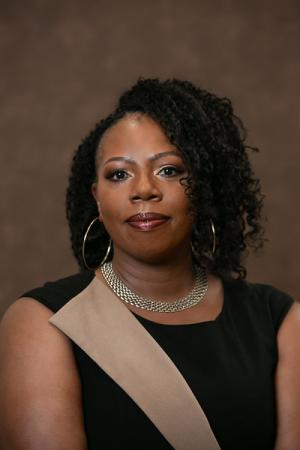
This semester I taught the Gospel of Luke for the first time. My class was a seminar style class with seven students who worked diligently through the Lucan text while also engaging various scholars and they ways that these scholars used a variety of methods for interpretation. Since most of my published works are in the Gospels of Mark and John, teaching the Gospel of Luke was a new experience for me. During the course of this class, my students dubbed me as their most “confessional” professor. At first, I disliked the term because, in my mind, I was still seeking to embody the detached state in my teaching approach which would have been very similar to many of the professors with whom I studied New Testament texts. However, I had to ask myself why I was seeking to be detached within this particular pedagogical space. Upon reflection, I realized that the makeup of the class was one reason I wanted to appear detached. In my Gospel of Luke class, I had a variety of students ranging from budding womanist and feminist students to strictly complementarian male church leaders. As an African American woman professor, I have found in my years of teaching that strictly complementarian male church leaders often avoid my classes just because of my embodied presence. Because I knew that some of our conversations could become tense, I wanted to remain a detached presence even though my embodied presence oftentimes cannot afford to be detached. My particular embodied presence makes a difference in the ways that students receive information. Realizing this, I embraced the idea of being confessional—with some caveats. Most scholars understand confessional approaches to religious education as not valuing differing interpretations of understandings of scripture and theological concepts.[1] Confessional scholars often believe that different opinions cannot be valued and accommodated within confessional spaces. I would offer something slightly difference and nuanced. Turning to the work of Patricia Hill Collins, I argue that even though I am an ordained minister and seminary professor, my “confessions” are not rooted in the above-referenced (and outdated) understandings of confession but are confessional with a hint of testimonial authority. Collins argues that academia is influenced by various forms of critical analysis. Citing critical race theory, Collins discusses that said theory was advanced by legal scholars, practitioners, and activists while drawing upon dual theoretical traditions: specifically, structural analysis within the social sciences as well as narrative traditions within the humanities.[2] Collins further explains that the narrative traditions stem from the testimonial authority of storytelling. The recipients of the worst practices within the legal system told their stories as a way to bring about change to the system. As I reflect on what I am calling “Womanist Confession as a Form of Embodied Teaching,” I realize that even as I explain the various theories and methods of biblical interpretation, most of my examples and discussion prompts stem from my own life and being as a Womanist New Testament scholar. Similar to Collins’ understanding of the testimonial authority of storytelling, I often reiterate stories of the worst practices of biblical interpretation that continue to gaslight within traditional confessional spaces. By doing this, Scholars can bring about change in the academic study of the Bible. For example, when studying Mary’s Magnificat in Luke 2, I prompted the class to think about questions of consent, knowing that my own experiences of sexual assault lie in the background of my questions. While I may not explicitly tell stories about such experiences, I do allude to and testify about different experiences in my life and how male pastors have gaslit me into believing that the sexual assault was not as bad as it was.[3] Statistics also help in explaining the importance of asking these questions. According to the CDC, one in four women experience a rape or attempted rape in their lifetime.[4] There were five women in my class so that means that two of us has had such an experience. How does the conversation of Mary’s “consent” play out when we ask these questions while reading the biblical text? Oftentimes, male students do not think that such questions belong in the conversation but, as I argue to them, preachers may miss more than half of their congregation if they ignore such questions. As pedagogues, we are not objective, dispassionate, and detached presences in our classrooms. I hope that each and every one of us continues to interrogate our own identities and our own stories as we enter the classroom space. [1] L. Philip Barnes, Education, Religion and Diversity: Developing a New Model of Religious Education (New York, NY: Taylor & Francis Group, 2014). [2] Patricia Hill Collins, Intersectionality as Critical Social Theory (Durham, NC: Duke University Press) 90. [3] See https://www.christianitytoday.com/news/2019/june/sbc-caring-well-abuse-advisory-group-report.html. [4] See https://www.cdc.gov/violenceprevention/sexualviolence/fastfact.html.
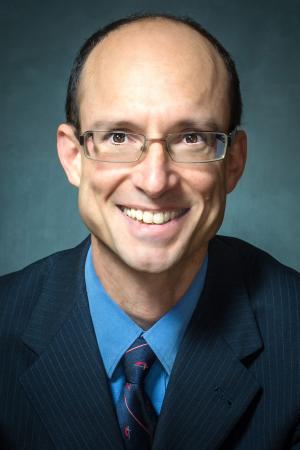
Trauma. Is there any more apt word for the past few years? COVID-19, social distancing, racialized violence, political insurrection—these are just a few of the collective traumas affecting our lives. I’m sure each of us can name additional layers from a personal standpoint, from broken relationships to untimely deaths. So, the need for trauma-informed pedagogical interventions in the classroom seemed uncontestable and urgent when I wrote a small project grant proposal to the Wabash Center in spring 2021. We knew our students were hurting. We were aware of individual trauma histories before social distancing shut down our in-person classrooms. Then COVID hit. Since mid-March 2020, significant portions of our online instruction were dedicated simply to checking in with students, connecting with them emotionally and spiritually, before engaging with them intellectually. Then, George Floyd was murdered by a white police officer in May 2020. Racialized violence hit our students and their communities hard; 35 percent of our student body is African American. We sought trauma-informed pedagogical strategies to help us. The project, “Trauma-Informed Classroom Teaching at Lancaster Theological Seminary,” was intended to equip our faculty with skills, tools, and strategies to optimize the classroom learning experience of students with existing and ongoing trauma histories. I learned that this is no small project. And neither is trauma-informed care reducible to tools and strategies—it involves our whole, embodied selves and the entire community. We began by engaging a Trauma Informed Specialist to provide our faculty a conceptual introduction to trauma and trauma-informed care. This was an easy ask since Lancaster County is committed to becoming a trauma-informed community. In preparation for the workshop, the specialist, Melanie Snyder, invited the seminary to commit to becoming a trauma-informed organization through a program sponsored by her employer, Penn Medicine Lancaster General Health. It was not a good time for Lancaster Seminary to commit to this larger goal. Too much was in flux institutionally, including a combination with Moravian University, for us to look beyond our immediate classroom needs. Snyder’s workshop, “Understanding Trauma, Resilience, and Trauma-Informed Care,” provided a robust introduction for our full-time faculty, some adjuncts, and a select few staff persons. The three hours flew by, equipping us with the basic vocabulary and concepts necessary to talk about trauma. My first inkling that this initiative would not remain confined to the classroom was when someone remarked how valuable the presentation was and asked why the entire staff had not been invited to participate. She was right. Trauma-informed care is a community-wide effort. Our work on classroom pedagogy began in earnest with a workshop by Oluwatomisin (Tomi) Oredein of Brite Divinity School in October 2021. She taught a liberative approach to our individual preparations to create and implement one trauma-informed pedagogical strategy in our classroom during the academic year. We discussed how diverse experiences of race shape the trauma and resilience of individuals. We also examined how we bring our entire, embodied selves to the classroom as instructors, including our racial biases, experiences, and personal trauma histories. As one participant noted, “Trauma-informed pedagogy requires building relationships of trust with students, and to do this, I must be appropriately vulnerable.” Acknowledging our own difficulties over the past two years was essential to this effort. Many faculty, as has been well-document, were suffering their own traumas. As instructors, we had to grapple with “The Truth of These Matters . . . .”: we were worn down, some of us barely hanging on, and we had little bandwidth for innovating, improvising, and implementing new pedagogical strategies. A mid-year listening session with students informed the faculty of some of the struggles students were having and reminded us that we were all in it together. Again we learned that trauma impacts, and trauma-informed care requires, the work of the entire seminary community. During the final workshop of our 18-month initiative, Stephanie Crumpton of McCormick Theological Seminary led us in a discussion of what we had accomplished, areas of growth, and next steps. Individual faculty members had succeeded, to greater or lesser degrees, in testing new trauma-informed pedagogical interventions in the classroom (informed by the resources below). We understood we had a long way to go. Crumpton observed that our faculty had succeeded in become trauma-aware, the first step in becoming trauma-informed, and perhaps even becoming a place of healing centered engagement. The next steps would involve students, staff, and all members of our seminary. We are on a journey from classroom to community. Select Resources on Trauma-Informed Pedagogy Crumpton, Stephanie M. “Trigger Warnings, Covenants of Presence, and More: Cultivating Safe Space for Theological Discussions About Sexual Trauma.” Teaching Theology & Religion 20 (2017): 137–47. Tinklenberg, Jessica L., ed. “Trauma-Informed Pedagogies in the Religious Studies Classroom.” Special Issue, AAR Religious Studies News, Spotlight on Teaching (March 2021). https://rsn.aarweb.org/spotlight-on/teaching/trauma-informed-pedagogies/editors-introduction. Wabash Center Blogs. “Teaching and Traumatic Events” series. (2018). https://www.wabashcenter.wabash.edu/category/teaching-and-traumatic-events/. (See especially posts by Lewis and McGarrah Sharp) Wabash Center Blogs. “Teaching and Learning During Crisis” series. (2020). https://www.wabashcenter.wabash.edu/category/teaching-and-learning-during-crisis/. (See especially posts by Lee, Oredein, Rideau, and Silva-McCormick) Wabash Center’s Podcast Series: Dialogue on Teaching. “When Trauma Touches the Teaching Experience with Dr. Lisa Cataldo.” (2021). https://www.wabashcenter.wabash.edu/resources/trauma-informedteaching/
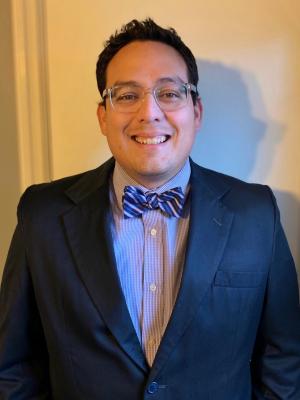
During my teaching experience in Zambia, music became an important part of the day-to-day life of my students’ coursework. When I first asked the students to share about things they valued from their own culture, one of the elements they mentioned was their love for music. As I was to later find out, this love of music did not refer to music theory or a song being played. Rather, it is a way of living out their culture and experiencing life through music. Music was everywhere in Zambia: in my students’ homes, in their schools, in their churches, and in their houses of worship, for example. Music was to be experienced and led to a form of embodiment, or at the very least recognizing that as human beings we are embodied in our everyday visceral reality. I also found myself making connections to my own Latinx ethnicity. For example, many individuals of Latinx heritage also share an African heritage. Several countries in Latin America have been marked by racial intermixing between Africans, Amerindians, and Europeans. There is even a growing field of study of the Afro-Latino experience. I recently did a DNA test and discovered that at least 10 percent of my DNA is African. It was surprising, but in my Latinx experience it was a heritage that was suppressed and ignored, although the cultural influence was undoubtedly there. I thought that perhaps engaging music would be a way to connect my own heritage to the experiences of these students in Zambia. And concomitantly, perhaps the use of music could lead to an embodied experience in the classroom where we could build bridges between our cultures, ethnicities, and races. I knew that I had to improvise in my lesson plans to accommodate this important cultural element in the classroom. I asked each student to prepare a song for one of our teaching sessions during our time together. Because I had 12 students, I asked some of them to pair up. I was specific and asked for songs that they sing for worship in their own country and that were relevant to the course content, but they had the freedom to choose the song. I encouraged them not to use digital sources, but to sing or play the songs in their own way. When the first student presented her song, her voice carried over the class. It was an old hymn that the students immediately recognized (I did not). The students all joined together in their singing. Their bodies swayed and some raised their hands. In this expression, their bodies were present, involved, and recognized. It brought to memory the book by Estrelda Alexander, Black Fire, where she traces the importance of African spirituality in Pentecostalism and describes the body-mind-spirit correspondence of their worship.[1] For my students, music was a corporeal and corporate experience. As an instructor who was present in this environment, I was stating by my mere presence, “Yes, you and I are different; but we can enjoy these musical arrangements together. We can share in this special moment. We are together in this class. We are on equal footing.” Music gave them a legitimacy to express themselves. In listening, I demonstrated that they were valued. Their contributions as authentic as they were to their context were not dismissed or looked down upon, or even looked over. Their voices mattered. Their culture mattered. Their skin tone mattered. I was deeply appreciative of the resourcefulness of my students despite having little or no resources. Music was one way that this resourcefulness played out. For example, the students sang together. Sometimes, it seemed they were singing two different melodies, yet their differences complemented each other. They would also use their hands to clap or use sticks to keep the beat and rhythm. I was amazed at how they all wanted to participate in this experience. If they didn’t know the lyrics, they hummed along. After the singing, the class seemed to come together. Not only were student’s minds engaged in the course content, but their bodies, attitudes, and culture were involved also. I concluded that music is a wonderful resource. It is able to change a person’s mood. It is able to create a certain ambiance or environment. It is also something that is shared if everyone is listening to the same thing. All the participants move to the music together. The classroom was not just a foreign Honduran-American telling students how to think or what to think. Rather, it created space for meaningful engagement. As I return to the US, I want to make music a part of my courses. Whether we sing old hymns or modern music, it is important to honor the cultures, ethnicities, and races of my students. This is one way to engage them. I know students may have reservations about singing, but at the very least they can bring a video clip to play in class through web services like YouTube. Whether it is online or in person, sharing in music is an activity that all can participate in [1] Estrelda Y. Alexander, Black Fire: One Hundred Years of African-American Pentecostalism (Downers Grove: IVP Academic, 2011).
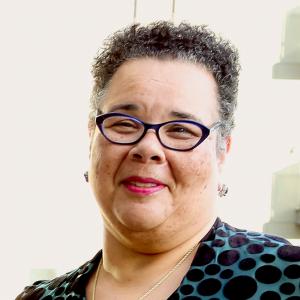
It is well substantiated that the retention rate in predominantly white institutions (PWI) for BIPOC faculty is abysmally low. Newly hired BIPOC faculty in PWIs report feeling ignored, unwelcomed, even shunned by colleagues and students. They are treated as if, though hired for the job, that they do not belong. Yes, there are some PWIs for which providing hospitality to BIPOC faculty is done well. However, the majority of BIPOC colleagues who leave employment after less than three years report that their reason for leaving hinges upon experiences of being treated inhospitably. With this assertion, I am not focused on overt acts of racism or discrimination. I am, instead for this blog, focused upon acts of cultural insensitivity, lack of basic social skills, and the inability of an institution to be caring, compassionate, and friendly to newcomers who are BIPOC. What goes wrong? Simply put, the new people are not on-boarded, not offered kindness and warmth. Climates of care, hospitality and belonging do not just happen. An ethos of welcoming new people must be attended to by many, many persons. The habits and practices of care, compassion, and belonging when BIPOC persons enter the PWI must be painstakingly exercised and attended to conscientiously. Regrettably, so many schools do NOT have systems for on-boarding, orienting, and providing for the arrival of new persons in the first six to nine months of employment. People feel unwelcomed because no one, in a robust and institutionalized way, is welcoming them. I would like to offer this list of activities, rituals, and happenings for your context so that, from the very beginning, BICOP colleagues feel a strengthen of ties and a genuine forming of connections. All these possibilities will not be for every context and every hire. Find what works for you and the person who is newly hired. Consider this list, and given your context, create new ideas of care for newly hired BIPOC colleagues: Invite the colleague to meals hosted in their honor. These are not meant as informal committee meetings, but gatherings to get acquainted with one another. Decide if the meals are better in an area restaurant or hosted in a private home. In either case, ask about the person’s dietary preference and restrictions. Who on your faculty gives the best parties? Soon after arrival, ask the best host to throw a party for the new BIPOC faculty and have fun. If you are a well-established member of the community, do not be stand-offish. Do not hold-up waiting for the new faculty to ask you to coffee. Take the initiative – invite the new person to coffee or a meal - with no other agenda than getting acquainted. During the conversation listen more than you talk. Develop a ritual of welcoming professors by having the president, provost, dean, or department head introduce the new colleague to their first class, then applaud wildly in front of students. Send the message to students that this new person is not on probation, not still being interviewed, is not less significant as a faculty colleague due to race. Send the message that there is an expectation that all respect will be given to this colleague. Invite the new person to participate in campus rites, rituals, religious services in a role of their own choosing. Assist the person with finding a religious community for themselves and their family should they desire it. Invite the person to the trustee meeting, alum gathering, student event. Plan to introduce and celebrate the arrival of the colleague at the event. Invite the person to attend the campus sports event and sit in the location of honor. Invite the person to the faculty retreat and make sure they have transportation to the location. If the venue is in a rural location where the BIPOC colleague would be unwelcomed, or in danger, change the venue. Make sure the person has club or institutional memberships that are common and available in that context. For example, membership to the local country club, membership to the local gym, membership to the local library, etc. Connect the person to known childcare networks, if desired. Inform the person of access to certain “insider” goodies, e.g., campus guest housing, coupons for travel, use of vacation properties, meals in the refectory, bookstore discounts, etc. Connect the person with one or two colleagues (one from faculty and one from staff) who will take responsibility for on-boarding. Assign an elder faculty colleague to mentor the person on issues of tenure, promotion, and institutional culture. Make sure the person has necessary keys, identifications, computer accesses. Help the person with office set-up. Make sure all available institutional documents are provided, e.g., Employee Handbook, campus calendar, trustee meeting minutes, faculty meeting minutes, organizational chart, phone and email directory, etc. Connect the person with persons who have a similar family structure (persons caring for children, elderly, pets, etc.). Help the person locate doctors, groceries, barber shops, hair and nail salons which are culturally woke. Consider what is unique about the town, city, or area and invite the new person to participate in that regionally cultural event. Create an “ambassadors” list, i.e. a profile of families who would welcome getting calls from new persons about issues as they arise. Ask the new person what they need, or what their family might need, to secure a good quality of life in the new location, then work to provide for that need. In the most hospitable schools, it is understood that all persons in the community have a role and responsibility in welcoming the new colleague - ALL PEOPLE - EVERYBODY! The key is for the new BIPOC faculty person not to feel alone, isolated, abandoned, unwanted, or suspect. In the words of my mother, Nancy B. Westfield, “You do not have to become friends with all the new people, but you do have to be friendly.”

I’ve been doing some nonfiction creative writing recently (you can see my latest piece here, if you’d like). And it’s been an interesting exercise in curation, a term most closely associated with the world of art history, but now used all over the place. When writing about a real life, you have so many precious details, nuances, characters, memories—and you have to carefully select, and then organize, which of those are most important, which will then be preserved in the (perhaps someday published) story you aim to tell. Of course, we curate all the time, not just in art galleries or storytelling. What do we take care of? What do we retain or prioritize or foreground? What do we exclude? What are we missing? When someone asks us how we are doing, so often we simply default to saying, “Great, and you?” regardless of whether this is actually how we feel. We curate what news we consume, what friends we spend time with, what food we put in our bodies. We curate in partnerships and parenting. We curate at work. And we curate in our teaching. Think about which parts of yourself you disclose to your students. Think about what activities and assignments you make space for on the schedule and which you don’t. Think about what concepts or skills you think the students can handle, or need, to learn at any given moment in a course, and which will have to be saved for another time. This is all a form of curation, I would argue. I often say that a syllabus is more about what doesn’t make it in than what does. Especially in introductory religion courses—we have to leave out so much! (And, of course, with the material that does make the cut, like a curator at a museum, we have to think how to structure that material into the “narrative arc” of a course—a concept I, as a writer, love.) We only have so much time and energy. We can’t do it all, folks. There are all sorts of criteria for curation in the classroom—our areas of expertise, our personal interests, the course’s learning objectives, the level of the students, the institutional mission—but those aren’t my focus here. What I want to muse on is the dark side of curation, which I think social media aptly represents. (This is one of the main reasons I stopped using social media over a decade ago.) Curated content can give a false, and unattainable, impression of perfection. (How often do we feel badly about our own lives when we see the seemingly flawless lives depicted on others’ Facebook or Instagram accounts?) Curation can elide or obscure process. (How many photos did it actually take to capture that one where the whole family was smiling?) Curation can seem to emphasize singularity or definitiveness, over nuance, messiness, options, multiplicity. Curation can make matters appear finished or settled or completed. Curation can feel closed. I imagine these impressions can have some negative effects on students. Perhaps, when we cut out debate or history or context—that is, the messiness, the details—students are left with problematic notions about the study of religion (e.g., that there is a singular definition of the term) or specific religions (e.g., that Hinduism is all about karma and dharma). Perhaps students wind up not understanding the extensive, nonlinear, trial-and-error process that’s required to acquire important knowledge or skills in our field. Perhaps they feel ashamed if they don’t understand the reading for the week or if they bomb the only test. Perhaps they look at the example essay and think, “Maybe this whole college thing isn’t for me.” Curation is necessary, common, and often beautiful—but it can carry some risks. How might we dodge these downsides in our teaching? Here are some strategies I’ve tried, to pull back the curtain a bit for students, while accepting that I must inevitably curate the learning environment and experience to some extent. For starters, I sometimes talk about how I went about creating the syllabus and how (and why) I decided what to include and what to leave off. Or I mention what I’ve done in past courses and why I’ve changed my approach. I point out mistakes or typos in the printed works we read. I show students drafts of my own articles and (often quite critical) peer-review comments, as I’ve mentioned in this blog before. When I want to provide a model for a particular assignment, I try to give multiple examples (rather than one, which they may then feel pressured to simply emulate) and/or annotate the example(s) with both strengths as well as areas of improvement. I assign authors or speakers with different, sometimes totally oppositional, viewpoints, so students understand that there isn’t a single correct view to hold on any given topic. I provide examples of the differences between the aspirational, ideal, “authoritative,” or textbook version of a religion and the various ways that real people are going about, living their lives, around the globe and at different times. If we don’t have time to get into the depth or nuance of a particular topic, I still make a point to underscore, repeatedly, the complexity. I admit to some of my own struggles with the readings or tough topics. I tell them about my own undergrad experiences. I say when I don’t know. We talk about what’s happening around campus, in town, or around the world, and how appearances can differ from reality. How do you experience the concept of curation in your own teaching? And what are some ways you can retain the benefits and beauty of curation, while also avoiding its pitfalls?
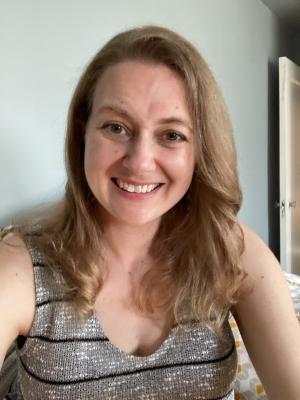
Proponents and practitioners of multisensory learning are experiencing a loss as it becomes clear that the shift to virtual and hi-flex learning has become a norm in many institutions, not the short-term solution it once seemed it would be. How can we learn in an embodied way when all we can see is sea of talking heads? How can we use all of our senses when half, if not all, of the class is on a screen? We experience grief at the loss of favorite lesson plans and the ability to observe the shifts that take place when learners engage with their whole bodies. The initial thrill that we could still at least do small group discussions using breakout rooms has long since worn off. When can we get back to embodied learning? In truth, we never stopped. The bodies have always been there behind the screens. We just have to find new ways to get materials into learners’ hands and trust that our entire bodies are learning even when we can’t share space with one another. I used to have an insuppressible grin on the days that I walked from my office to my classroom laden with Play Doh, markers, construction paper, and any number of materials my students associate more with Sunday School than graduate school. Although I can no longer count on the ability to spontaneously distribute craft materials, I can still make use of them so long as I plan sufficiently ahead. Unique materials can be sent in the mail and a good “care package” can contribute to building community at a distance. If I know (or highly suspect) I will be using easily acquired materials such as crayons in a course, they are now a part of my required “book list.” My first-year students are particularly surprised that they will need six colors of Play Doh for their introductory Bible course! I have discovered that in addition to making sure students can learn with their senses from any location, making sure that everyone has a similar collection of creative implements sets the tone for the learning community we are about to create. A playful tone is present from the outset without the need to wait for a particularly exciting lesson plan. Learners also experience viscerally the usefulness of having such materials at the ready. I used to be the one who always had chenille stems on hand; now we all do. With easy access to a variety of materials, students can create models and symbols to express what they are learning whether the entire class is in one group or doing small-group learning. Even without physical materials, shared control of the virtual whiteboard can allow a learning community to communicate collaboratively using multiple senses. The digital format does not limit us to expressing ourselves with words alone. We can color-code Pentateuchal traditions or create images for our understanding of theological concepts. Once everyone has multisensory materials available to them, the initiative for embodied learning can come from anyone in the community. When learners take the lead in designing course material or creating a learning activity, they can anticipate, like I do, that everyone will have the basic materials at the ready to learn with their senses. This provides the necessary support and encouragement for learners to become leaders in embodied education. They are freed to develop creative lesson plans for class presentations and leadership because they know that when they come up with an idea they can run with it. I have had keener student leaders think far enough ahead to mail supplemental materials to the entire class in their homes, while asynchronous learners video or photograph their results to share with one another for ongoing conversation. It is not just a relief—but a joy—that I haven’t lost the ability to play and use a variety of multisensory materials in the classroom when my classroom became partially or entirely virtual. It surprised me into giving learners more agency in including these necessary learning implements in their repertoire. The learning continues to be embodied, even if our bodies are physically distanced from one another.
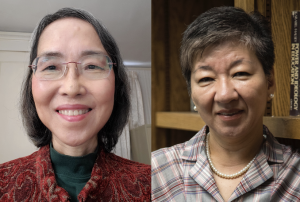
What do artificial intelligence, machine learning, robotics, and other new media arts have to teach us about the teaching and learning of religious worldviews, imagination, and symbols? To find this out, a small group of scholars in religion and theology, funded by a Wabash Center Grant, visited the Massachusetts Institute of Technology’s Media Lab in the spring of 2022. They met with Professor Rosalind W. Picard, the founder and director of the Affective Computing research group at MIT’s Media Lab to learn about her latest work. The design and organization of the Media Lab offers insights into the habitus of learning and innovation. The glass building is futuristic looking, spacious, airy, and full of light. It contrasts with the nineteenth-century and more traditional architectural designs of some theological schools. On the first floor is a display of the history of landmark scientific discoveries and advances relevant to the work of the Media Lab. Throughout the building, there are posters providing information and celebrating the research done in the various labs. Researchers are welcome to join a tradition of discovery, innovation, and exploring the future. The Media Lab facilitates the cross-fertilization of ideas by housing in one building labs that conduct research of different kinds: bioengineering, machine learning, sensors, cognition, environment, space, and computer science, etc. With glass partitions, researchers can see what is going on in other labs. They can visit other labs to consult their colleagues and learn about the latest developments in other fields. To recruit the brightest and most talented students, MIT raises funds to provide scholarships for its graduate students. We saw students and researchers of different nationalities and ethnic backgrounds working at the Media Lab. The physical environment and habitus are important for teaching and learning. In Educational Imagination, Elliot W. Eisner differentiates between the explicit and implicit curriculum. The explicit curriculum is the actual contents taught in the classrooms and labs. The implicit curriculum is the environment and ethos that includes the ways the teachers teach and interact with the students. It is obvious that the building and design of the MIT Media Lab, i.e. its implicit curriculum, tangibly embodies its educational commitment to collaboration and transparency. It generates curiosity and new imaginations that lead to collaborative possibilities. It also encourages members to embrace a culture of transparency and communal thriving rather than competency and secrecy. When the explicit and implicit curricula of an institution and its teachers are in sync, it is easier to generate a positive learning atmosphere that benefits the students. Dr. Picard’s work on affective computing trains computers to recognize various human emotions. Picard’s team worked extensively with diverse people, including people with disabilities, to categorize human emotions in detailed and nuanced ways. Through this process, they have discovered how critical emotion is in the learning process. Positive affect such as awe, satisfaction, and curiosity contribute to constructive learning, while negative affect such as frustration, disappointment, and misconception lead to un-learning. Theological educators have much to consider about the affect we create in students. In After Whiteness, Willie James Jennings criticizes the plantation style of educational institutions. The plantation style is hierarchical and is run by the racial paterfamilias. It requires teachers and students to enter into the affective reality of white, Western institutional life. The educational space is a space of thinking, but not feeling. Students learn different disciplines but are not given the opportunities to build with the institutions. Racial minorities and people with marginalized identities often find it hard to inhabit such learning spaces. In a traditional classroom, the tables and chairs are arranged for students to listen to the professor’s lectures. Today, many professors incorporate the use of PowerPoint in their teaching. But students are still treated as passive spectators. Some professors rearrange the furniture of the room to facilitate small group discussions and interactions. What more can we do to encourage creative collaboration and co-learning? Education is about the whole person. Thomas Groome, a prominent Christian religious education scholar, calls this an ontological activity as it involves people’s ontos, their very being. Christian education includes knowing Jesus in a personal relationship through faith, but it accentuates this relationship with the pursuit of justice; that is, how one practices justice, mercy, and love. Through informative, formative, and transformative activities, education seeks to complement people’s whole way of being in the world, including questions about who they are and how they live. If we take this aspect of education seriously, our understanding of the curriculum, including its scope and context, will need to be broadened. MIT’s Media Lab stimulates us to think about an embodied model of learning in theology and religion.
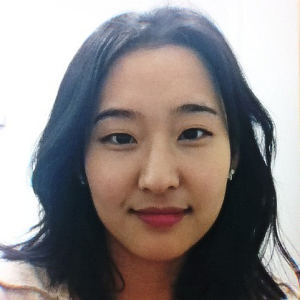
My daughter looks forward to her trip to Disneyland, which is scheduled for her twelfth birthday. She listens to the stories about the park from her friends, reads the descriptions on the website and magazines, and watches numerous ads on YouTube. One day I asked her (trying to save some money), “Honey, since you already know so much about Disneyland, do you really think we should go?” You can easily imagine her screaming reply: “No way! I should definitely go! It is totally different!” Teaching world religions for several years, one question that I try to better answer each time is: “How can I make each religion real and alive, so that students don’t see it as a concept to be memorized or something that exists in textbooks or histories, but as something that they can feel, touch, apply, and appreciate, in other words, something that they can ‘embody’?” I find this question especially important since many students have been trained to see religion as a series of beliefs and doctrines, rather than daily practices, bodily movements, and practical ways of dealing with specific challenges in life. There are several pedagogical methods I have been developing to enhance the embodied understanding of religions. There is much room for further refinement. One is providing opportunities for having sensory experiences of a religion. For example, during our sessions on Hinduism, as students come into the classroom, they will hear ancient Vedic hymns recited by Hindu priests. In another session, they would smell the fragrance from burning herbs and ghee commonly used in daily Hindu rituals. Yet in another session, they listen to George Harrison singing “My Sweet Lord,” which embodies Hindu piety and religious inclusivity with a beautiful melody and guitar sound. It is okay if students keep chatting with their friends, browse the internet, or review previous materials experiencing these things. The casual setting is intentional because I think there’s a significant value in building up familiarity with an unfamiliar religion in a relaxed setting without the pressure to comprehend or memorize information. I find these small exposures make it easier for students to open their minds and engage more intently in class discussions and lectures. During the class hour, I utilize multiple videos to help students observe the religious practices. In particular, I ask them to focus on the sounds, movements, facial expressions, and variegated bodies of practitioners whose voices are often muted in scriptures. For example, before discussing the concepts of the Hindu sacrificial ritual, I ask students to describe whatever they see in the video of an ordinary sacrifice, paying attention to every detail they’ve noticed. Students are often surprised to learn that their simple remarks are tied to important concepts such as puja, darshan(a), symbols and characteristics of gods, murti, and rituals. Another method that helps students experience a religion more intimately comes from hearing the voices and watching the movements of practitioners in person. For each religion, I reach out to students and colleagues who practice that religion or are coming from that background to talk about their religion. They share their personal stories, show us photos and objects, and tell us what they value most about their religion. These demonstrations add a visceral component for the students that deepens their understanding beyond the stock images we find in textbooks and the internet. Sometimes the guests also share thoughtful questions and criticisms, which adds nuance to our understanding of a religion and intensity to the class discussion. External observation of sensate practices, however, is not enough. If embodied empathy is the goal, beliefs should be experienced, too, so students can tap into the value that practitioners find in a particular religion. At the beginning of the course, I introduce the concept called “Religious Scholar’s Magic Hat.” It is a rather light form of practicing epochē and getting snippets of insiders’ appreciation of the religion. I ask students to wear this imaginary hat while we practice applying a religion’s core ideas to our daily lives. For example, after presenting an array of Buddhist teachings on suffering and freedom from it, I leave some time for a reflective task. First, students think about the things that create stress in their lives, including some of their most painful experiences. Then after writing down their answers, I ask them to think carefully about the potential causes of those sufferings, looking carefully into the deep desires that they have. After this, with the help of Thích Nhất Hạnh’s short guided meditation, we practice focusing on a single desire or emotion that rises in our minds, aiming to see its illusiveness. Throughout this mock Buddhist meditation, students can try embodying central Buddhist teachings, seeing the potential applicability of Buddhism to some of their problems. I believe that the conscious practice of embodying religion in class, despite its incompleteness and sometimes awkwardness, helps students extend their understanding of religions. Hopefully this training enables students, when they encounter a religion of others, can practice trained empathy rather than immediately distancing themselves based on doctrinal differences.
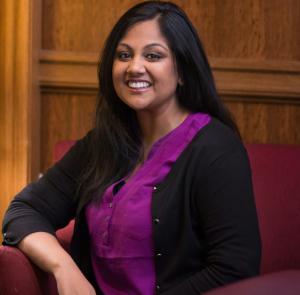
During our close reading of The Letter from Birmingham Jail, he defiantly asked in front of the whole class, “If you can force people into complacency, then segregation works, right? Society still functions.” I froze for a second, absorbing the gravity of the moment. My mind immediately calculated the multiple layers of that remark made within the complicated sociopolitical climate of the 2016 election season. This young white man was not just challenging Martin Luther King Jr.; his tone was intentionally challenging me as an Indian-American woman. Why? What was informing his challenge? The tension in the room was palpable, particularly as the students of color waited with bated breath for their professor’s response. This spontaneous internal calculation produced an answer that still feels like a moment of grace. After an initial pause, I responded, It’s not a question of whether society can still function, but the principles by which it functions. King is arguing that the only way a society can subjugate an entire population into complacency is by stripping them of their sense of worth; transforming them from a somebody into a nobody. This subjugation cannot be the basis of a just society. How might his claims relate to our earlier discussions of imago dei? What makes this letter prophetic in a manner similar to what we said about Moses? I could sense a collective sigh of relief in the room as the student’s initial defiance melted into greater openness. Another student immediately jumped in to offer her perspective. The discussion continued. Occurring within the first three weeks of my first year of teaching, this moment taught me to recognize that how I handle such tension either builds or destroys my credibility for the rest of the semester. While I intuitively prevented an escalation of violence by avoiding any kind of us versus them binary on the basis of race and turning all the students back to the text and shared content of the course, I sought resources that could aid me in understanding the role of embodiment and visceral responses in the classroom. In his book My Grandmother’s Hands: Racialized Trauma and the Pathway to Mending our Hearts and Bodies,[1] Resmaa Menakem argues that racism and white supremacy cannot simply be addressed through intellectual conversation. Rather, the discomfort we feel about these themes reveals how they live and breathe in our bodies. If we are born in the US, our bodies reflect trauma responses surrounding the myth of race. In the classroom in particular, racialized trauma can show up in heightened hypervigilance connected to a fight, flight, or freeze response that interrupts normal cognitive pathways. For example, the students of color in the classroom example above expressed this alarm when they waited with bated breath for my response. They were only able to relax once the questions were answered honestly without further harm being committed either against them or their peer. Menakem also proposes the idea of metabolizing trauma, which is especially helpful in preparing for these visceral moments when they occur in the classroom. First, as educators, we must recognize the intersection of our own social locations with those of the various students who make up our classes. Not only will each student relate to the content of the course from different social locations, but such social locations will involve different visceral entry points when the topic of racism is involved. Second, we must discern if our pedagogy is engaging in dirty pain or clean pain. Dirty pain is the pain of avoidance, blame, and denial. The classic example of dirty pain, Menakem argues, is “white fragility.” When talking about racism and white supremacy, white fragility is often viscerally expressed as a reflexive, protective response by which a white body avoids the pain or experience of racial trauma. Clean pain, on the other hand, is pain that can build a capacity for growth. Such pain helps us to engage our body’s integrity and tap into our embodied resilience by moving through painful realities with honesty, step by step. Accepting clean pain has two different effects. For white bodies, it allows them to confront their collective dissociation and silence. For bodies of color caught between white supremacy and anti-blackness in this country, clean pain allows for honesty regarding how these ideologies shape identities and forms of belonging in false ways. The wisdom of this approach, however, is that while all pain hurts, clean pain promises to heal generations so that we do not pass this visceral trauma on to our students. After being exposed to these fundamental concepts of racial trauma theory, I no longer fear these tense moments or see them as aberrations that distract from the lesson plan of the day. Rather, by skillfully attending to them with an awareness that the classroom asks us to be engaged in mind, body, and spirit, such moments have the capacity to heal by showing how we may better engage the hard conversations. [1] Las Vegas, NV: Central Recovery Press, 2017.
Categories
Write for us
We invite friends and colleagues of the Wabash Center from across North America to contribute periodic blog posts for one of our several blog series.
Contact:
Donald Quist
quistd@wabash.edu
Educational Design Manager, Wabash Center
Most Popular

Co-Creating an Online Education Plan
Posted by Samira Mehta on June 10, 2024

Cultivating Your Sound in a Time of Despair
Posted by Willie James Jennings on June 4, 2025

Are You Okay?
Posted by Nancy Lynne Westfield, Ph.D. on October 1, 2025

Judged by Your Behavior: Talk is Cheap
Posted by Nancy Lynne Westfield, Ph.D. on June 1, 2024

Plagiarism as Gaslighting in the Time of Artificial Intelligence
Posted by Brian Hillman on September 8, 2025